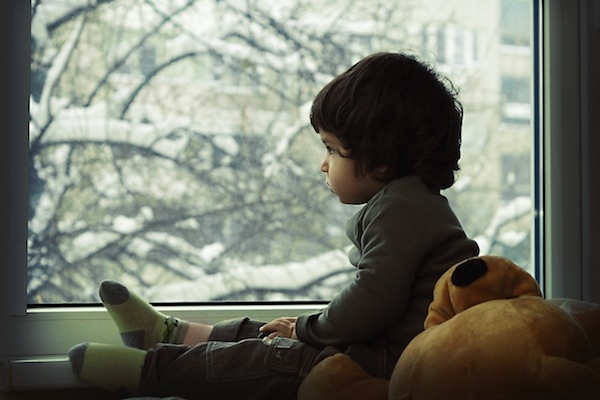It was something about the twins that got to me; after seeing so many baby institutions and children’s homes, I had almost grown used to abandoned children in ranks of cots, staring at the ceiling. The twins — a boy and a girl of six — were set apart; pale, twisted, both with cerebral palsy. Their mother left them in the institution on the day their father had kicked her out for ‘only being able to have crippled children’. I reached into the girl’s cot to hold her hand, and her steady gaze held mine. I bent over to hold her brother’s foot, and felt like a lightning rod between them. But the missing link is their mother.
Bulgaria has the highest rate of institutionalised children in Europe, more than 8,000 in 32 buildings, many in the most inaccessible parts of the country. I have been going there for five years, with the Bulgarian Abandoned Children’s Trust, which, along with other NGOs, is trying to change things.
Late last year, the new health minister, Desislava Atanasova, made an unscheduled visit to Pleven, which has the largest baby institute in the country. She then gave a press conference, where she told of the conditions in which the children lived, and in which, over the course of the past 18 months, the same number had died. She told of babies being fed with bottles long after they should be on solid food. She described three-year-olds unable to walk or talk, and 16-year-olds (this is an institution for children up to three) being kept there to justify the employment of 170 staff.
I have been several times to Pleven, and carry memories that haunt me. I think particularly about the disabled children, locked away on a separate floor, many growing into the shape of their cots, and dying of starvation and neglect. These children are robbed of any chance of life. The stench of urine and faeces and rotting teeth is all-pervading. If evil has a smell, then this is it. Only 2 per cent of the babies in these institutions are actually orphans. The rest are abandoned due to poverty and parental neglect, and many simply because they are disabled.
Because all 32 baby institutions come under the ministry of health, they are run along medical lines, and there is nothing in the way of education or affection. Much of the damage to the children is due to a lack of stimulation and interaction. The children don’t talk, because nobody has ever bothered to talk to them. They don’t walk because they are never allowed out of their cots, and their muscles have wasted away.
We have started a Granny (Baba) programme in Pleven. Twenty local ladies come in for four hours a day. Each Baba has one able-bodied child and one disabled child to look after. The difference this has made to the the children lucky enough to be on this programme is startling, but not surprising. Children are talking, and some are walking. They are learning to feed themselves, and to trust, to feel and to play. It is dreadful to see them being put back into their cots at the end of their four hours, and even worse to look at all the other children who have not yet been out of theirs. After the visit from the minister of health, journalists in Bulgaria described Pleven as ‘the death camp for children’.
There is a commitment to start a ‘de-institutionalisation’ process, with EU money. It is difficult to believe that the Bulgaria I see in these homes is part of the EU, and strange that, before its accession, the country was not bound to the same strictures about closing institutions as Romania was. Eight baby homes are marked for closure, but the task is huge. There are few family support services in the community. On a recent trip, I met a group of mothers who had defied the state (which still, via the doctors, puts great pressure on mothers to give up their disabled children) and kept their disabled children at home. I have never seen such exhausted women.
Small group homes are being built, for up to eight children at a time. I visited one recently at 3.30 in the afternoon and found all the disabled young teenagers in bed, with only one carer on duty. If the money is going into building these homes, and none into staffing them and re-training the staff, they will become replicas of the larger institutions.
I have worked with some inspirational Bulgarians who have dedicated their lives to making a difference to these forgotten children; people who have stood up against their local communities. Often, these institutions are the only source of local employment, and there is enormous, sometimes violent, resistance to their closure. But without a serious will for change, and a national policy on making disability acceptable, the twins I saw this week will spend their lives staring at ceilings.






Comments